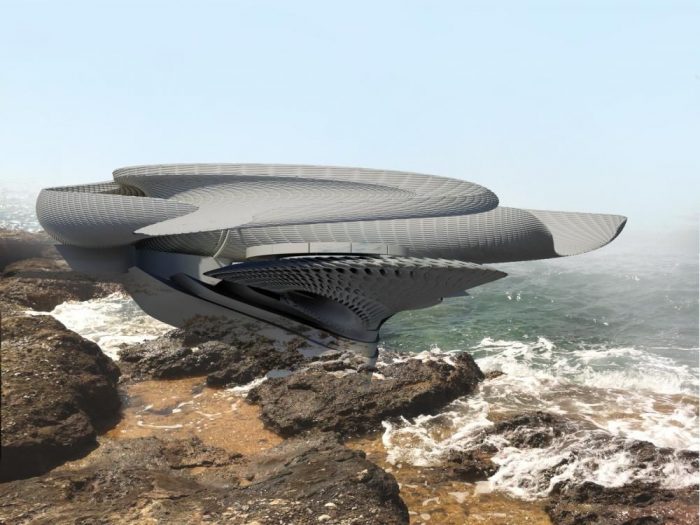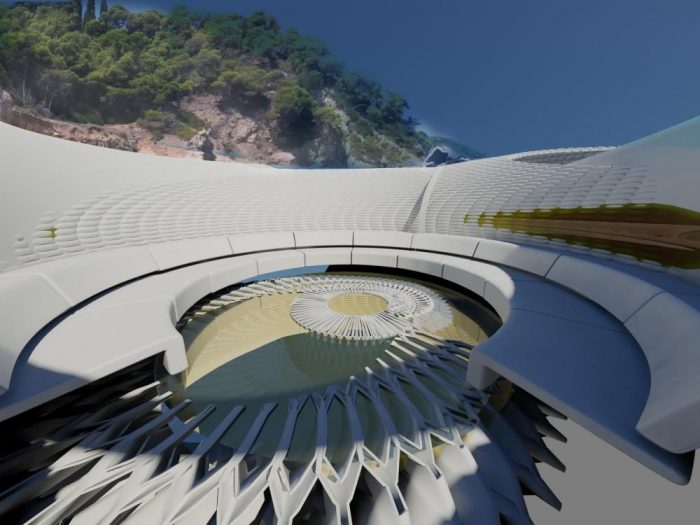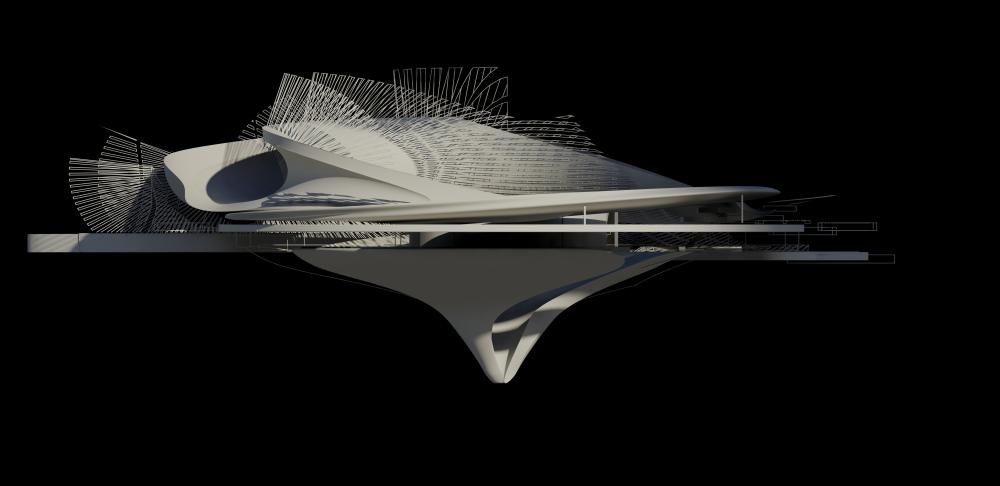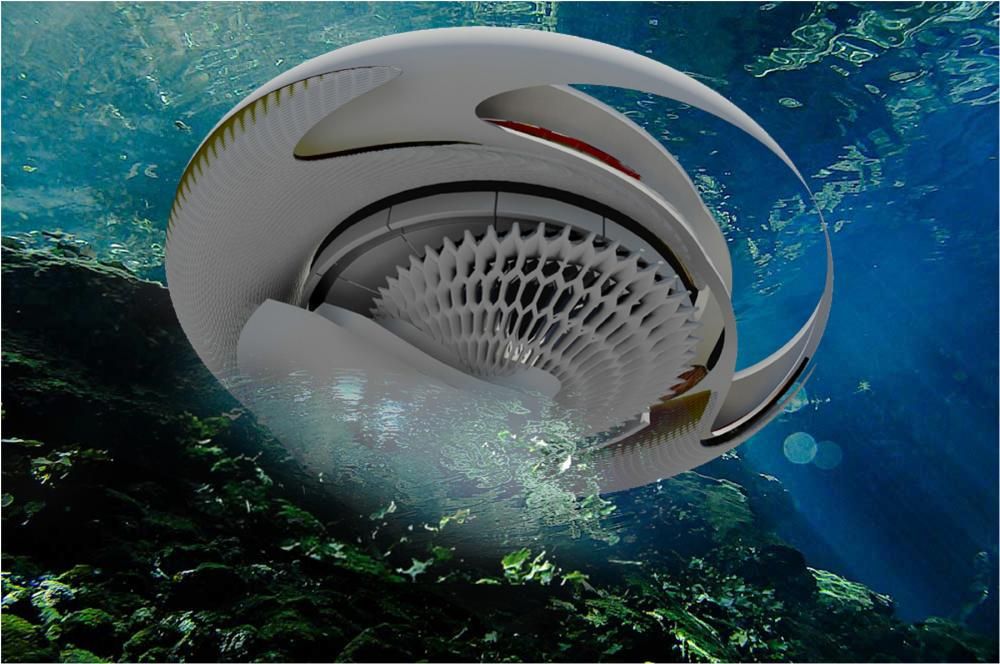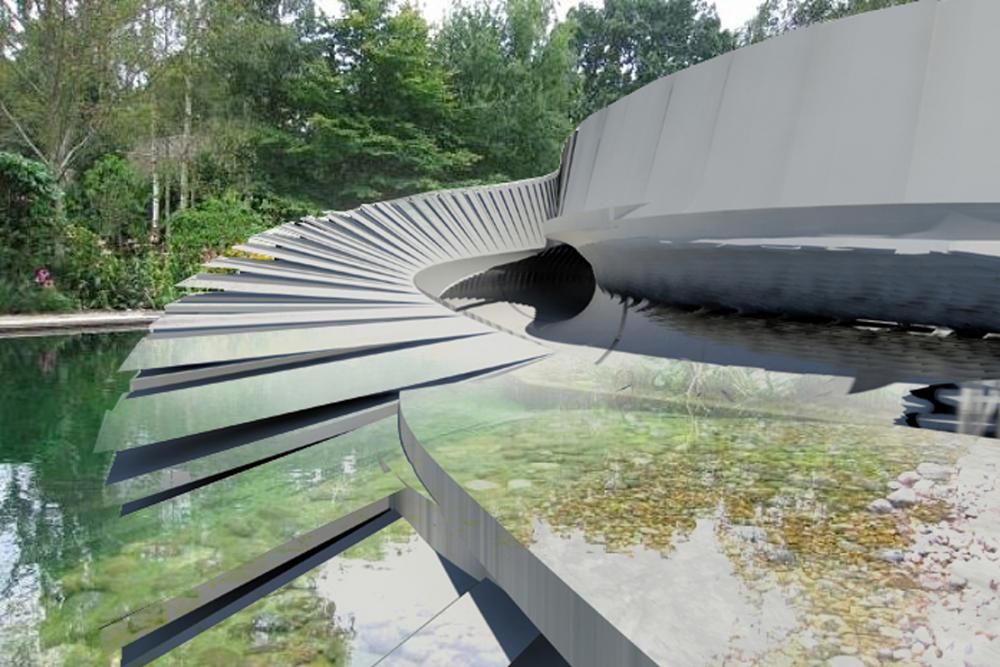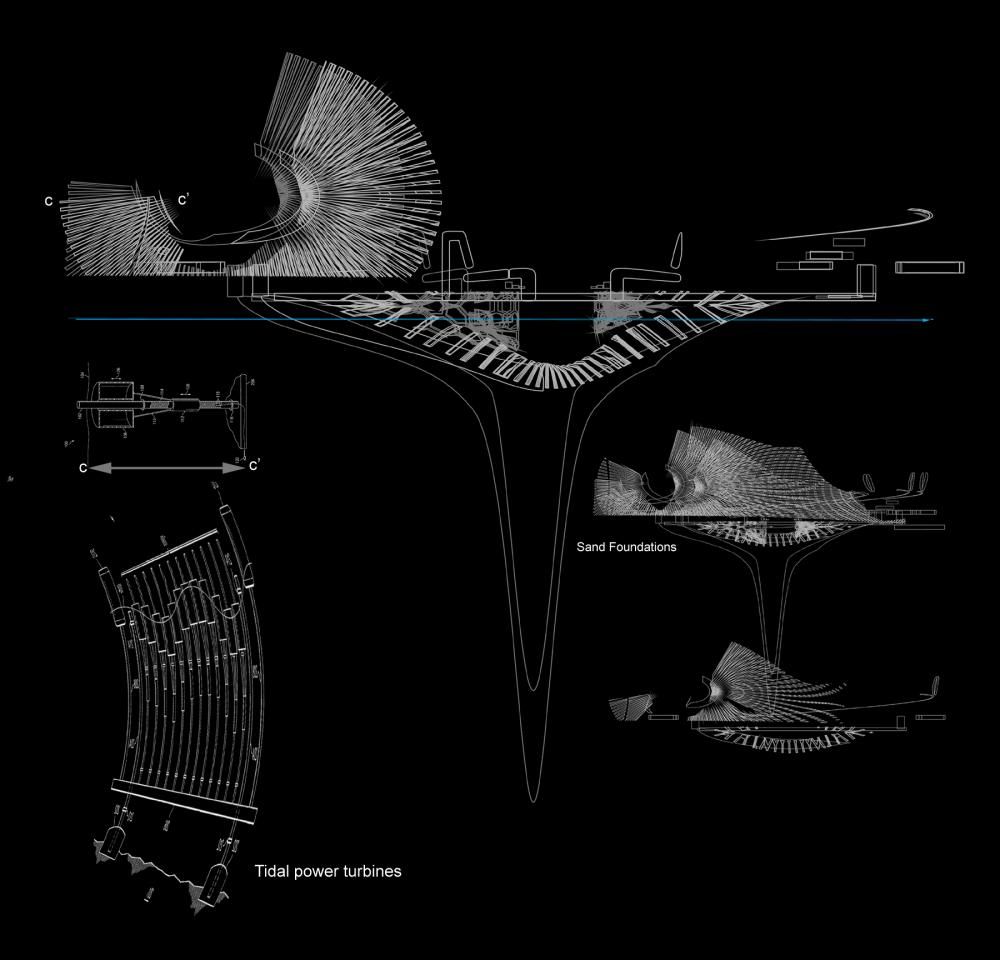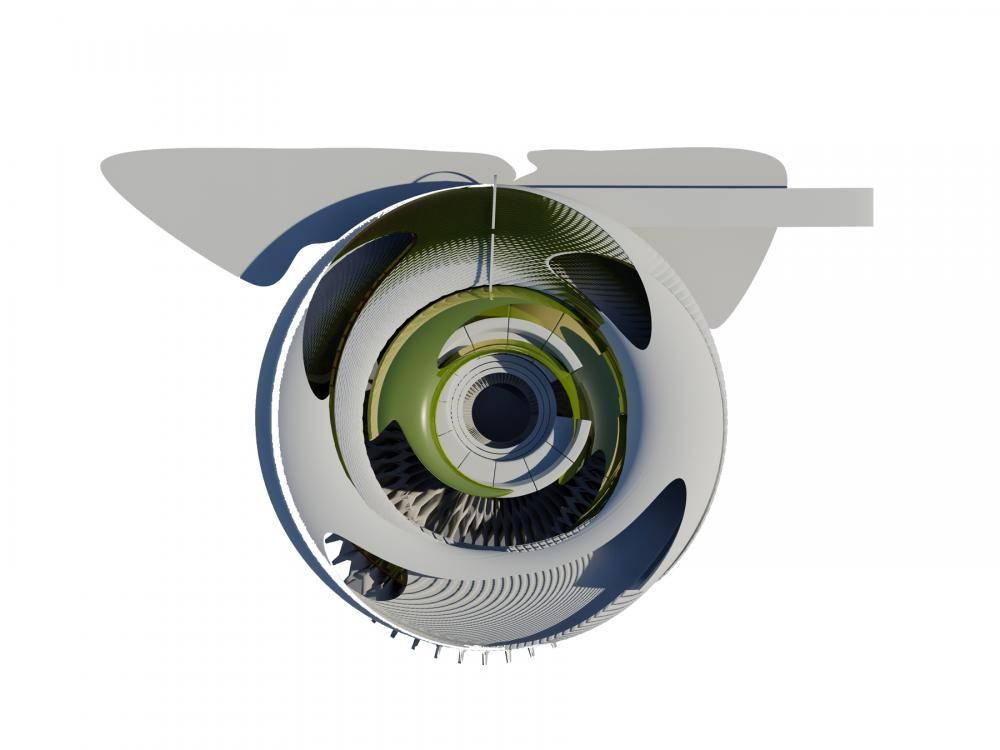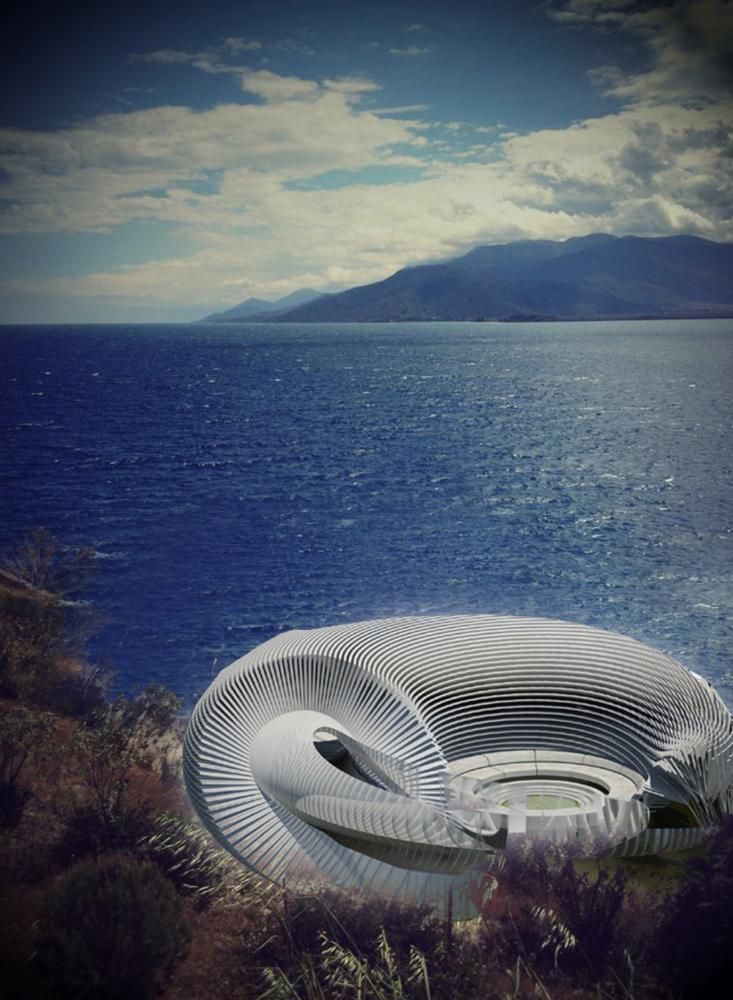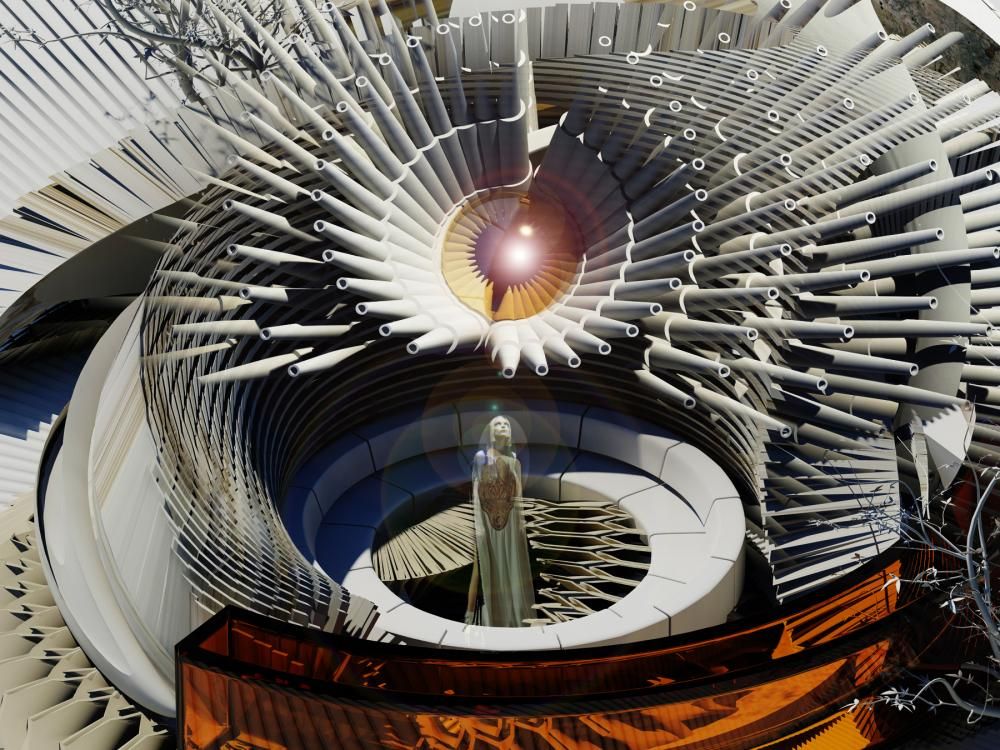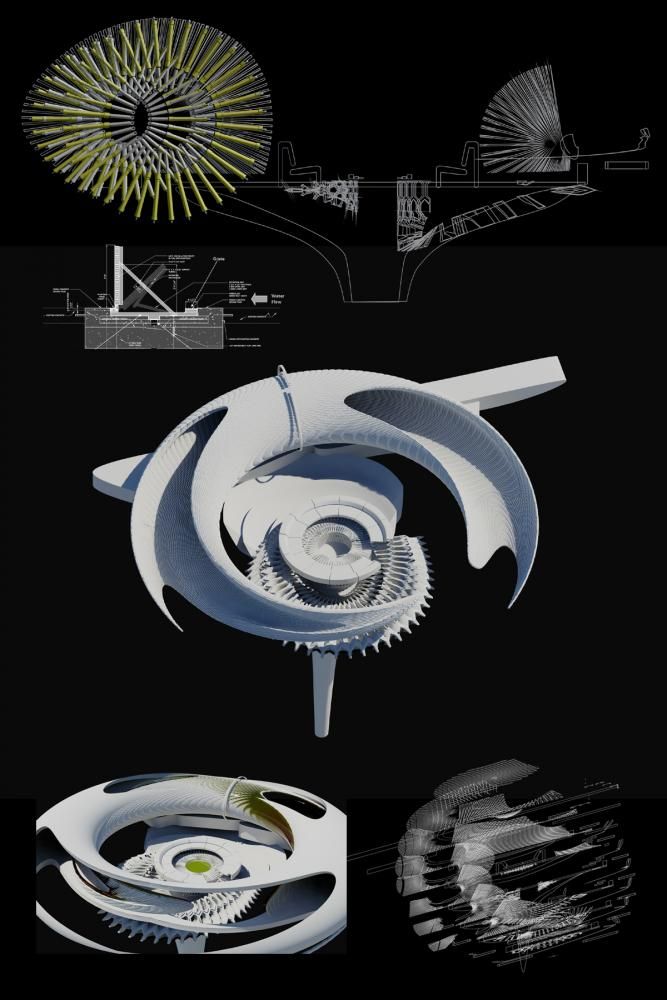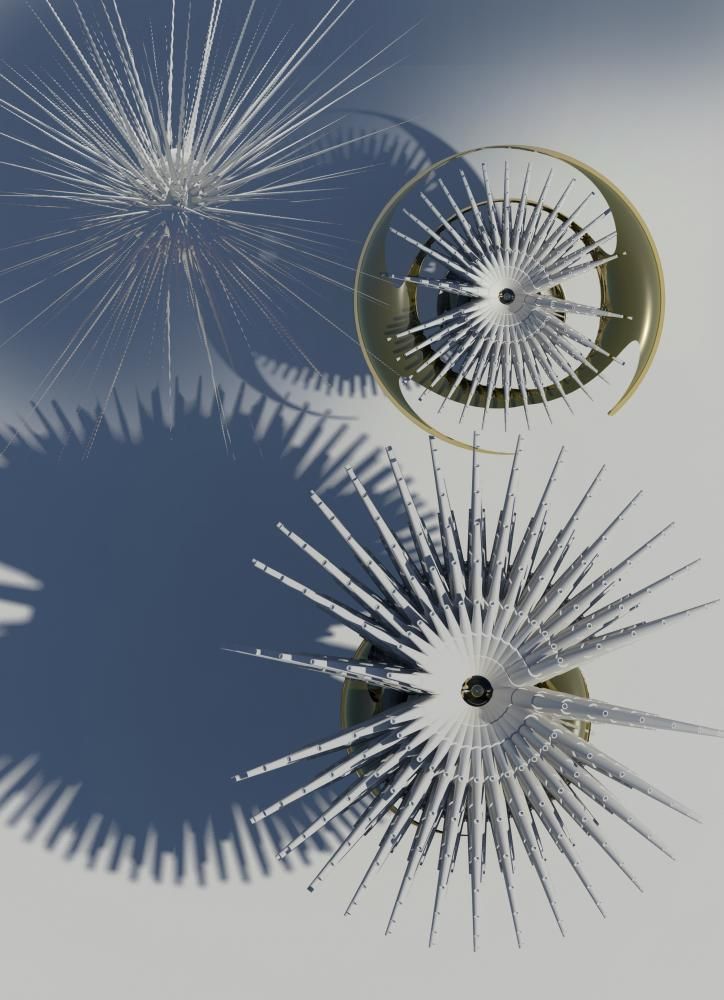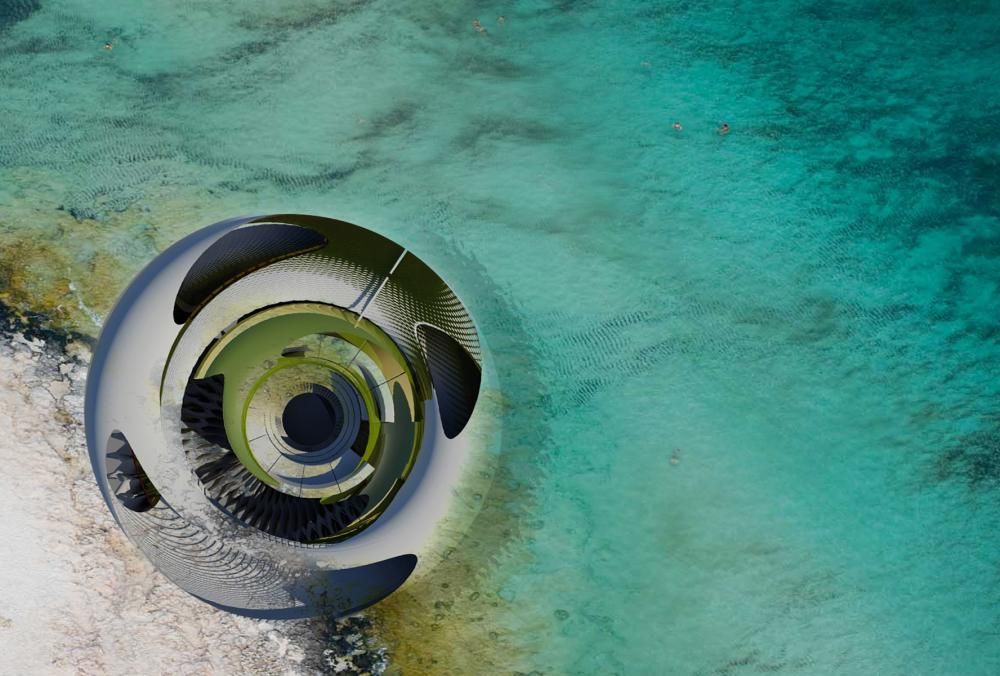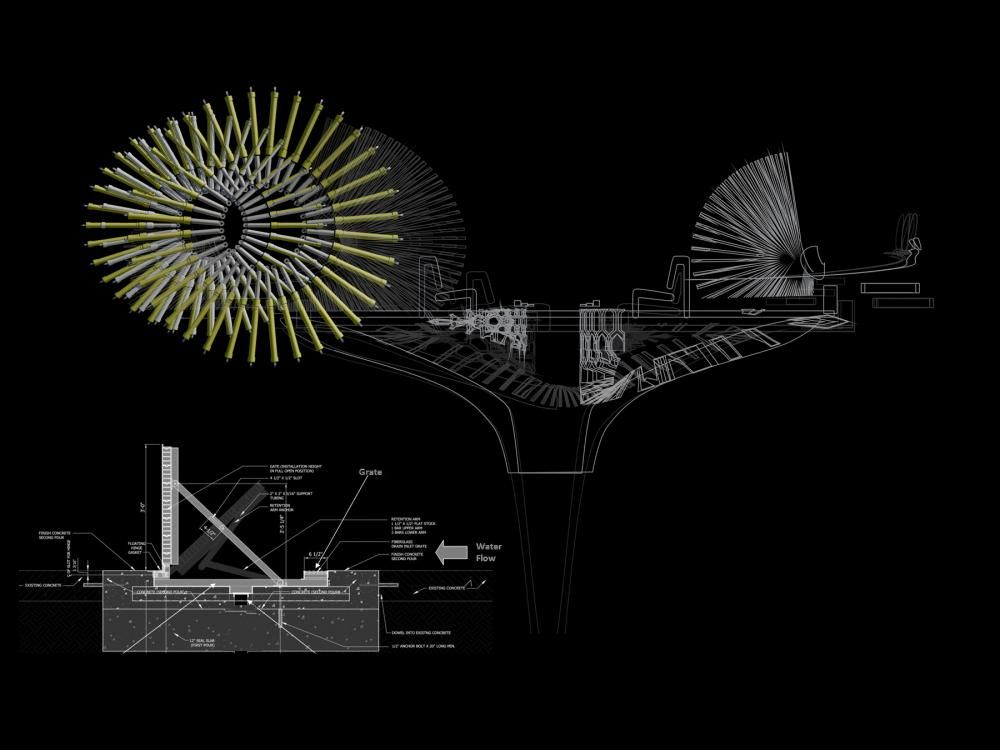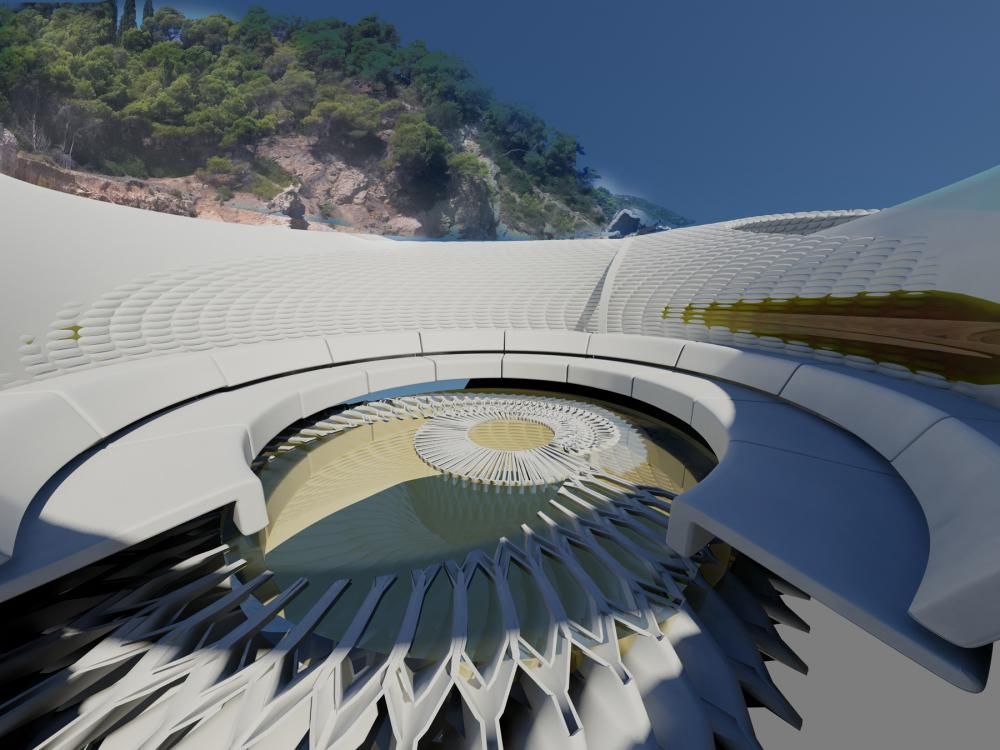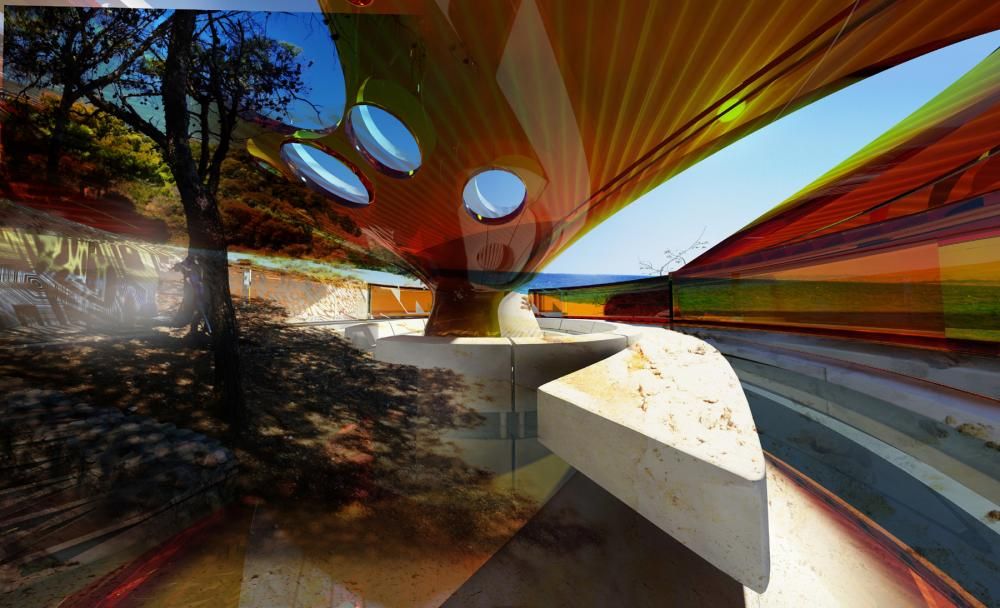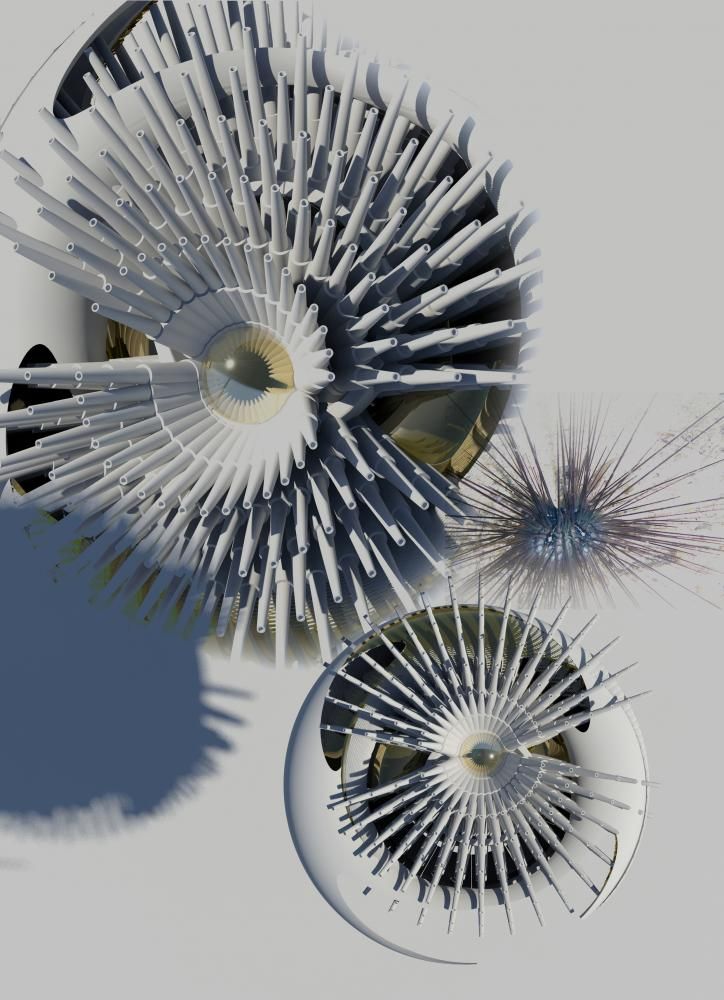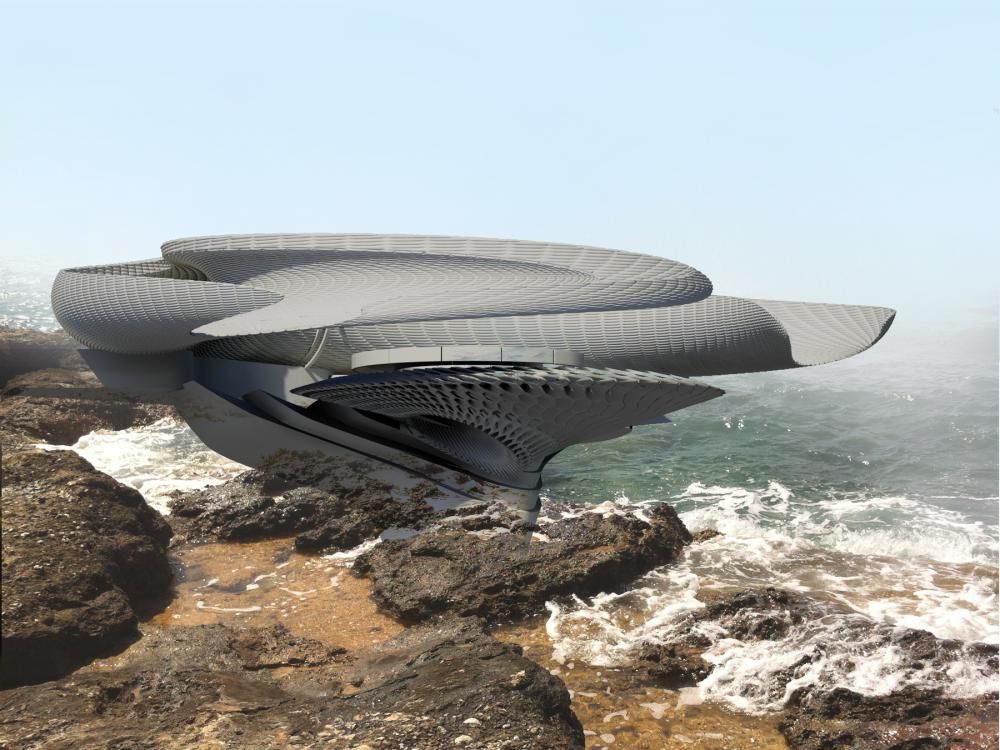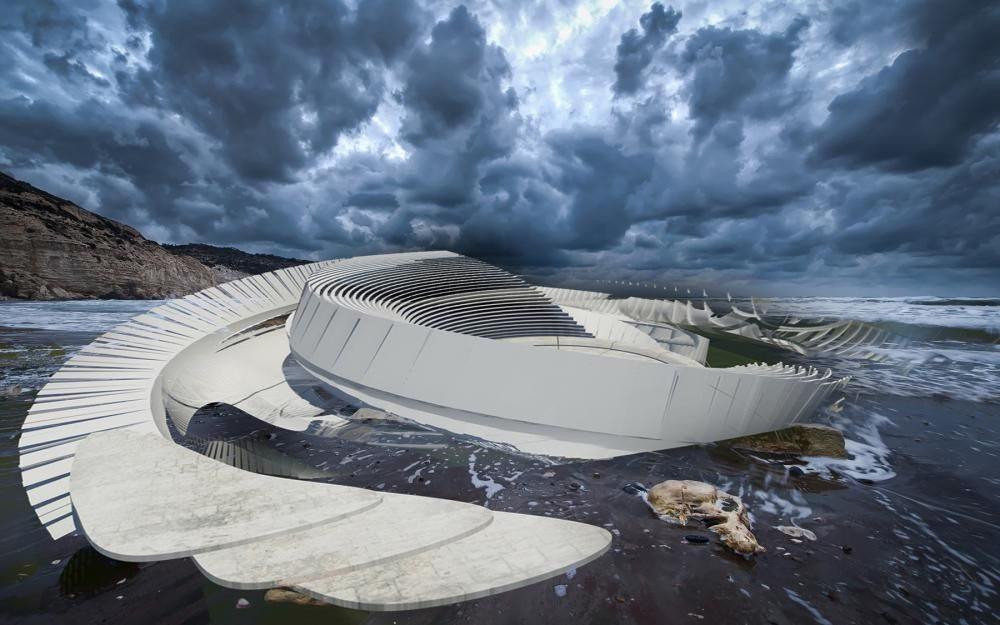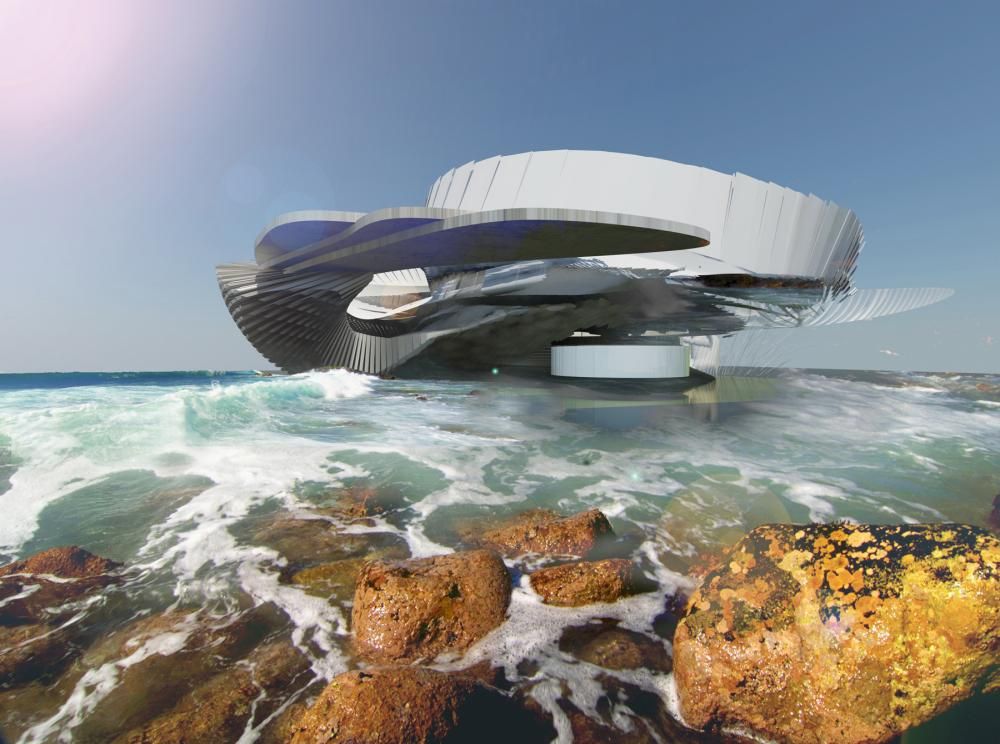Hydroelectric Tidal House
The Hydroelectric Tidal House has foundations embedded into the sand or rock coastline, harnessing tidal wave power to generate electricity.
The structure is made up of two shells- the outer, cast in concrete, anchors the house to the beach whilst the inner shell rises with the tide as it flows around the primary structure.
The semi-circular concrete shell contains solar cells that provide an electrical supply to the living area, the cross section is made from an array of hydraulic tidal turbines which generate electricity from a renewable source of energy, the tidal wave.
Tides are more predictable than solar and wind energy making it simpler to find an appropriate location to harness this renewable energy source.
There are two types of extruded turbine, one type uses lightweight aluminum chambers which compress air trapped in the chamber when a wave breaks on them, this kinetic energy creates an electrical current similar to wind turbines.
The second type of sustainable energy uses neodymium magnets to move through wound copper wire tubes inducing an electrical current as a wave pushes and pulls against the extruded chambers, the electrical energy can be stored in a capacitor.
This type of electrical generator is electromagnetically induced. The inner shell is made from a lightweight non-ferrous aluminum monocoque structure that floats within the external bunker as the tide rushes through it.
There are three modules to the living area making it easy to dismantle according to the functional requirements of the house. The outer shell is clad in a framework of cast concrete sections making it easier to transport. The form creates a series of channels for water to travel though creating a whirlpool effect which mimics the beachcomber house itself, in order to trap as much tidal energy throughout it’s structure.
Project Info
Architects : Margot Krasojevic
Location : Cape Town, South Africa
Year : 2014
Type : Electric Power Station
Courtesy of Margot Krasojevic
Courtesy of Margot Krasojevic
Courtesy of Margot Krasojevic
Courtesy of Margot Krasojevic
Courtesy of Margot Krasojevic
Courtesy of Margot Krasojevic
Courtesy of Margot Krasojevic
Courtesy of Margot Krasojevic
Courtesy of Margot Krasojevic
Courtesy of Margot Krasojevic
Courtesy of Margot Krasojevic
Courtesy of Margot Krasojevic
Courtesy of Margot Krasojevic
Courtesy of Margot Krasojevic
Courtesy of Margot Krasojevic
Courtesy of Margot Krasojevic
Courtesy of Margot Krasojevic


